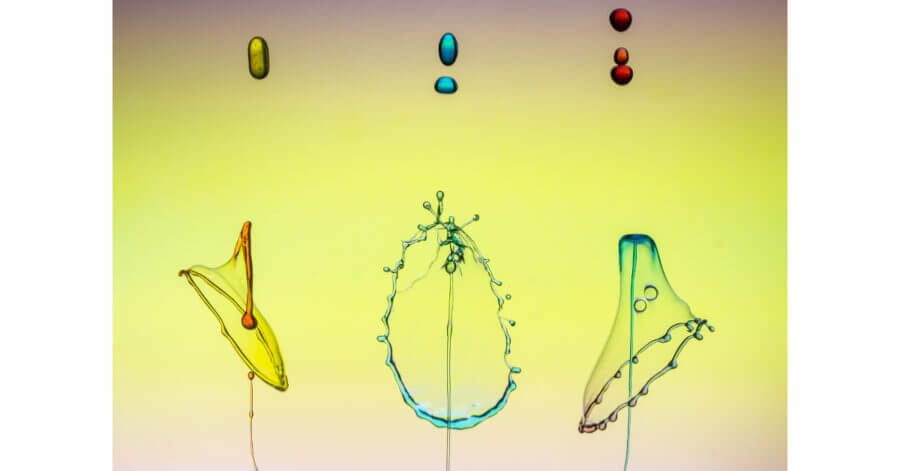Our little, rural town of Elk Rapids, Michigan is embarking on a big, bold journey of transformation. Challenged by an ageing population, a declining school enrollment, and a seasonal economy, a small Coalition of the Possible (Yes, you heard that right – more later) considered seeking an outside consultant to speak to us about ways rural communities can overcome their sometimes self-defeating ways to build a healthy community where people love to live. This notion was triggered by a book published by Doug Griffith, a former teacher, farmer, and legislator, entitled 13 Ways to Kill Your Community. Since it was the year of Covid, we invited him to speak to our community in a virtual forum. Doug introduced himself as a community therapist who specializes in healing and growing communities. The response to this Zoom event was overwhelmingly positive.
As a result of the enthusiasm he generated, our coalition decided to follow up on the event to see if we could garner broad citizen support for an initiative to build a healthier and stronger community. The Executive Director of the Elk Rapids Chamber of Commerce, Tom Kern, stepped up to lead the effort with the support of the Coalition of the Possible. He and his team managed to assemble a steering committee of critical, community leaders: the President of the Village Council, the President of the Downtown Development Authority (DDA), the Superintendent of Schools, the Chair of the Planning Commission and Green ER, the Library Board President, the Friends of the Library Chair, and the Library Capital Campaign Chair. Under the guidance of this mighty group of possibilists, Tom started setting up presentations to community stakeholders to solicit their financial and emotional support for this project, which carried a price tag of $100,000, to conduct a community assessment, engage citizens from all points of view, and to develop a strategic economic development plan. And that’s where this story really begins.
Not surprisingly, many citizens experienced sticker shock and questioned why we needed an outside consultant – from Canada no less – to help us grow our community. In fact, why did we need to grow in the first place. Elk Rapids is a charming, quaint town ideally located among pristine lakes in a natural wonderland – why change? As you might have guessed, that’s exactly the question I want to address in this cathartic missive.
Why change? Why spend $100,000 on a Canadian consultant? Why not use local talent whom we may be able to acquire for lower costs? All good questions.
A post by our library director, Nannette Miller, on a social media platform caused me to ponder these questions more deeply. Here is what she wrote:
“It’s sad that people believe they need to pay a consultant $100,000 to learn how to speak civilly to each other. It costs nothing to be a decent human being and behave accordingly. You can’t buy integrity.”
My first reaction was, “Aaargh, why would a primary beneficiary of this intervention want to undermine it?” So, in the middle of the night – still stewing about her post – I had an epiphany. Why not listen carefully to her words and re-frame the issue. At 3:30 in the morning, between my tosses and turns, I came to the conclusion that Nannette’s post helped me to see more clearly the real issues we are confronting here – issues that have implications far beyond Elk Rapids:
- How to get people to focus on the doughnut instead of the hole. Or, more simply, the whole vs. the hole?
- How to win the battle between the Coalition of the Possible and the Coalition of the Impossible?
- How to help people make the shift from an independent and competitive mentality to a collaborative and interdependent mentality.
First, let’s unpack and deconstruct Nannette’s message. Clearly, she is right on a few key points: we absolutely need to be cost conscious as we embark on this initiative – $100,000 is not chump change for a small community; we can certainly learn to speak more civilly for less money; and, indeed, integrity is essential. By definition, integrity can’t be bought.
To me, all of those issues should be foundational for our process, but don’t reflect the outcomes this project is designed to achieve – which brings me to existential question #1: How to get people to focus on the whole vs. the hole. The possibilities we are pursuing in conjunction with 13 Ways can be summarized with 4E’s: Economic growth, collaborative Engagement, Educational improvement, and Environmental sustainability, If, collectively, we were able to position for the future and realize those possibilities for our community, our investment would yield enormous returns – a huge multiple of the investment. Focusing on the whole means we should be more concerned about value than costs – on the doughnut instead of the hole. The real issue is our potential return on investment. .
I was still left perplexed, however, by the remaining existential issues revolving around possibilities and interdependence. Instead of continuing to stew about it and thrash around in my bed, I decided to get up and write. Here are some of my thoughts.
There will always be a battle between the Coalition of the Possible and the Coalition of the Impossible whether these groups are formalized or not. Big thinkers will always attract critics. I’ve been thinking a lot lately about the strategies the Impossible Coalition employs to undermine positive change and transformation. While the Coalition of the Possible is focused on the 4E’s, the Coalition of the Impossible is guided by 4D’s: Deny Distract, Divide, and Dismiss. First, deny that change is necessary. Second, distract from the real issue by gaslighting and dog whistling (more in a moment). Third, divide the stakeholders by stirring up warring camps – or tribes in today’s parlance. Fourth, dismiss the proposed possibility by creating the narrative that change is impossible or unnecessary.
For the sake of brevity and your tolerance for additional musing, I will only address the distraction strategy. The other 3 seem fairly apparent.
It turns out that distraction is an excellent strategy for getting people to focus on the hole. Two of the most powerful methods for distracting people are gaslighting and dog-whistling. Gaslighting means to seed doubt in people’s minds about the value of an idea, initiative or proposal. For example, you might describe a project to build a healthy and sustainable community as one that is attempting to teach civility for an unreasonable cost. Dog-whistling means to send coded messages to a targeted community. For example, politicians may force race into a conversation through thinly veiled racist remarks like “Welfare Queen” or “Southern Strategy.” But let’s not get too far astray here. The point is to be aware of the use of gaslighting and dog-whistling to distract people from the real message.
My point in writing this post is to encourage any force for positive change (in this case, the Elk Rapids Steering Committee for the 13 Ways project), to focus on amplifying the voice of the possibilists and creating an interdependent mentality in order to achieve transformational change. If we can work together to build a HealthiER, KindER, GreenER, StrongER community in Elk Rapids, then we will not only secure a sustainable and prosperous future for our community, but we may also inspire other communities to do the same. Let’s create a new narrative by focusing on the doughnut, on possibilities, and on interdependence.
I have always believed that it’s the questions we live in that define who we are more than the answers we may think we have. I’m going to try to live more fully in the questions I raised in this post, and I hope the steering committee will do the same. I don’t know about you, but I’m looking forward to sleeping more soundly in the future.
In closing, let me return to the title. Here are the 13 interdependent possibilities that correspond to Doug’s 13 ways to kill a community.
|
13 Ways to Kill a Community |
13 Interdependent Possibilities |
|
Forget the Water |
Collaborate with Environmental Groups |
|
Don’t Attract Business |
Recruit specific, new businesses |
|
Don’t Engage Youth |
Invite youth to get involved |
|
Deceive Yourself |
Make science-based decisions together |
|
Shop Elsewhere |
Support local businesses |
|
Don’t Paint |
Welcome beautification efforts |
|
Don’t Cooperate |
Seek ways to help others succeed |
|
Live in the Past |
Position for the future |
|
Shut out your Seniors |
Seek the wisdom of elders |
|
Reject Everything New |
Stay open to new ideas |
|
Ignore Outsiders |
Welcome all who come |
|
Grow Complacent |
Challenge each other to grow |
|
Don’t Take Responsibility |
Take ownership for your role |
Also published on Medium.




Well done my friend!